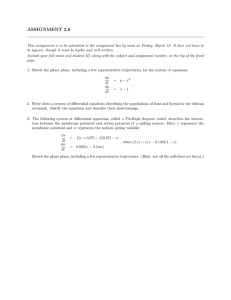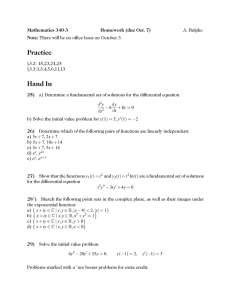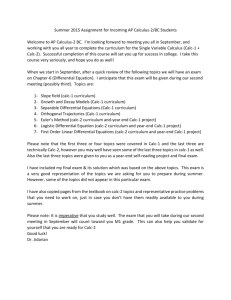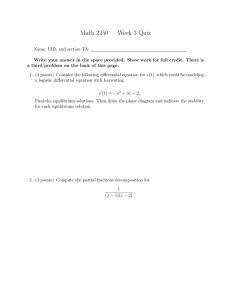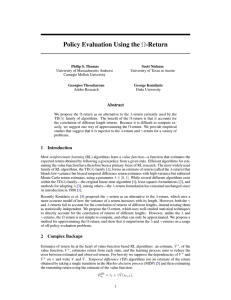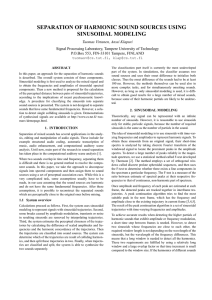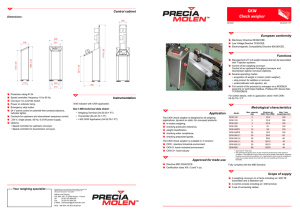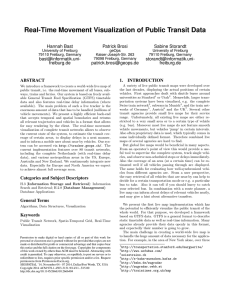A Mathematical Model for a Self-Limiting Population
advertisement
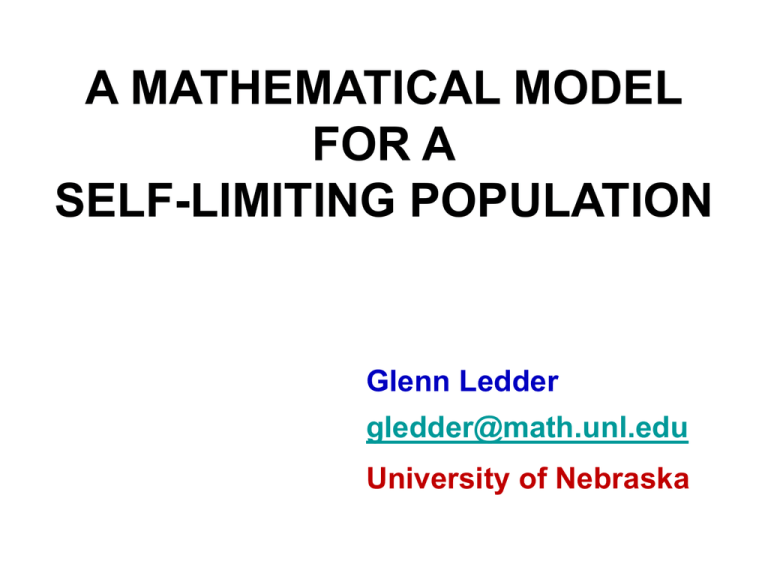
A MATHEMATICAL MODEL FOR A SELF-LIMITING POPULATION Glenn Ledder gledder@math.unl.edu University of Nebraska THE CONCEPTUAL MODEL 1. A container holds p(t) microorganisms and a quantity w(t) of waste, with p(0) = p0 « 1 and w(0) = 0. 2. Waste production is proportional to population. 3. In absence of waste, population growth is logistic. 4. Relative death rate increases linearly with waste amount. THE MATHEMATICAL MODEL 2. Waste production is proportional to population. dw dt —– = kp w(0) = 0 3. In absence of waste, population growth is logistic. 4. Relative death rate increases linearly with waste amount. dp p —– = rp(1– —) – bwp dt M p(0) = p0 NONDIMENSIONALIZATION dw —– = kp dt w(0) = 0 dp p —– = rp(1– —) – bwp dt M Let Then p = MP p(0) = p0 r w=— W W′ = KP P′ = P(1–P–W) b τ= rt W(0) = 0 P(0)=P0 NULLCLINES • W is fixed when P = 0 and increasing when P > 0. • P is fixed when P = 0 and P+W = 1. P 1 W 1 The DIFFERENTIAL EQUATION for the TRAJECTORIES We can combine the differential equations to obtain the differential equation for the trajectories in the phase plane. Given W′ = KP and P′ = P(1–P–W) : dP P′ 1-P-W Trajectories satisfy the equation —– = — = ——– dW W′ K CHANGE OF VARIABLES dP = 1-P-W The trajectory equation, —– ——– , is linear but dW K not autonomous. Let Z = P + W. dZ Then K –— = 1 + K – Z. dW This equation is autonomous as well as linear. PHASE LINE dZ K –— = 1 + K – Z dW Z = P + W. Z 1+K 1 + K is a stable equilibrium solution; however, it is not achieved because W remains finite. • P + W < 1 + K , and (P+W)′ > 0 TRAJECTORIES We can solve the trajectory equation to get P = 1 + K – W + (P0 –1–K) e-W/K K=0.5 K=1.0 MAXIMUM POPULATION P = 1 + K – W + (P0 –1–K) e-W/K The maximum population occurs when P + W = 1. 1+K-P0 P = 1–W = 1–K ln ——— K LIMITING BEHAVIOR With P0 = 0 and P = 0, we have W=(1+K)(1-e-W/K). s su (K, W∞) = ( ——, —— ), where u = -ln(1- s) u-s u-s EXTINCTION TIME Let T be the time (in units of 1/r) at which P = 0. From W′ = KP, we have T= W∞/K 0 du —————————— 1+K–Ku+(P0-1-K) e-u P0=0.01
